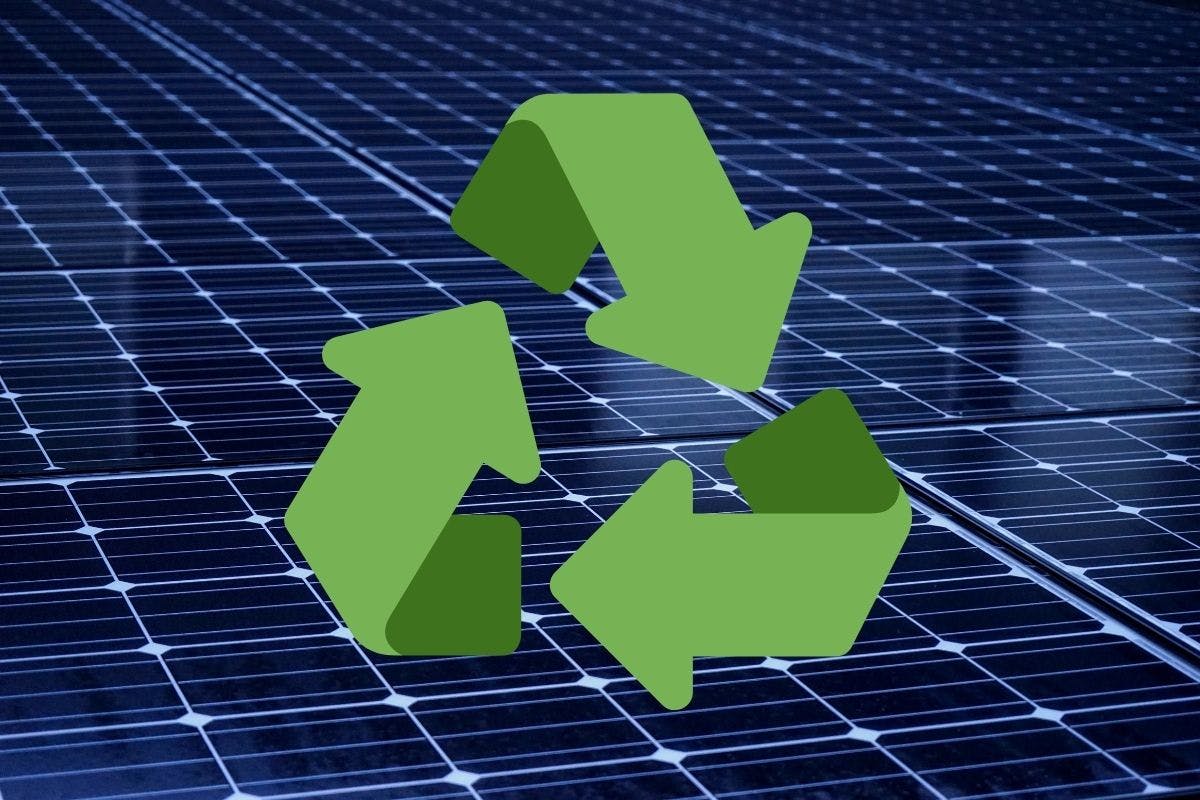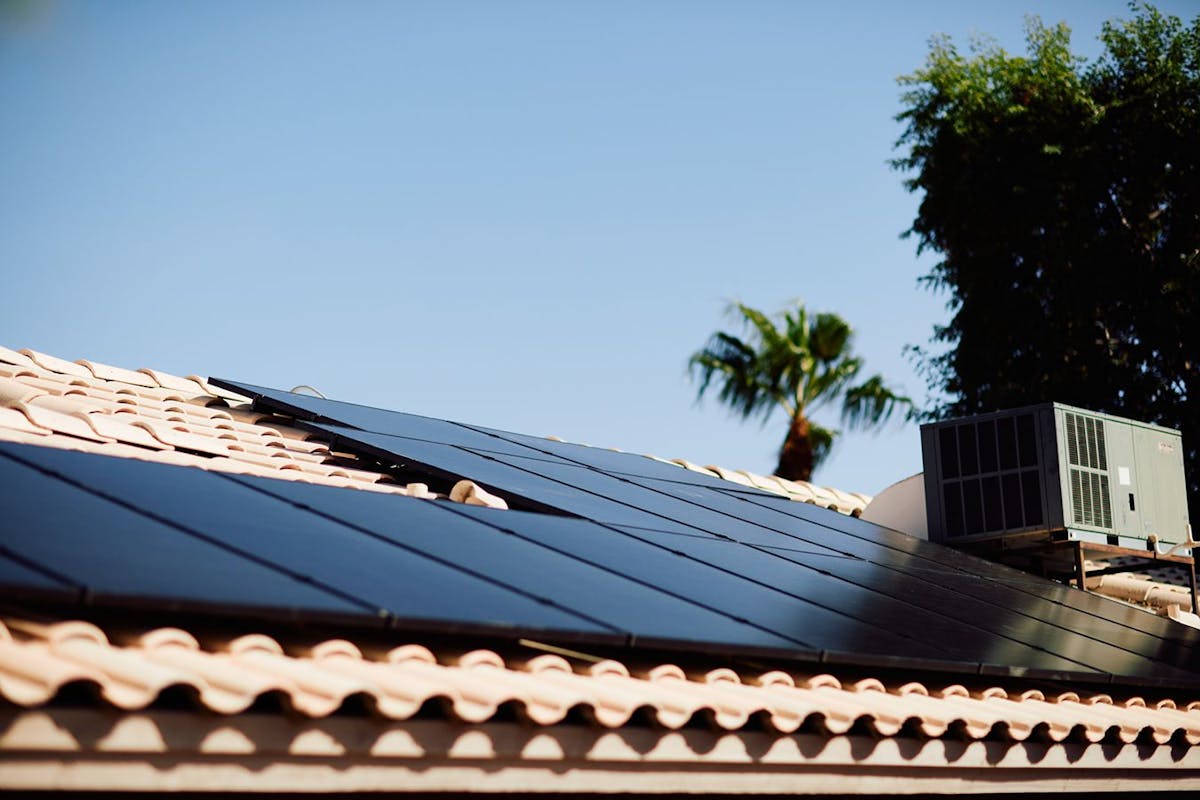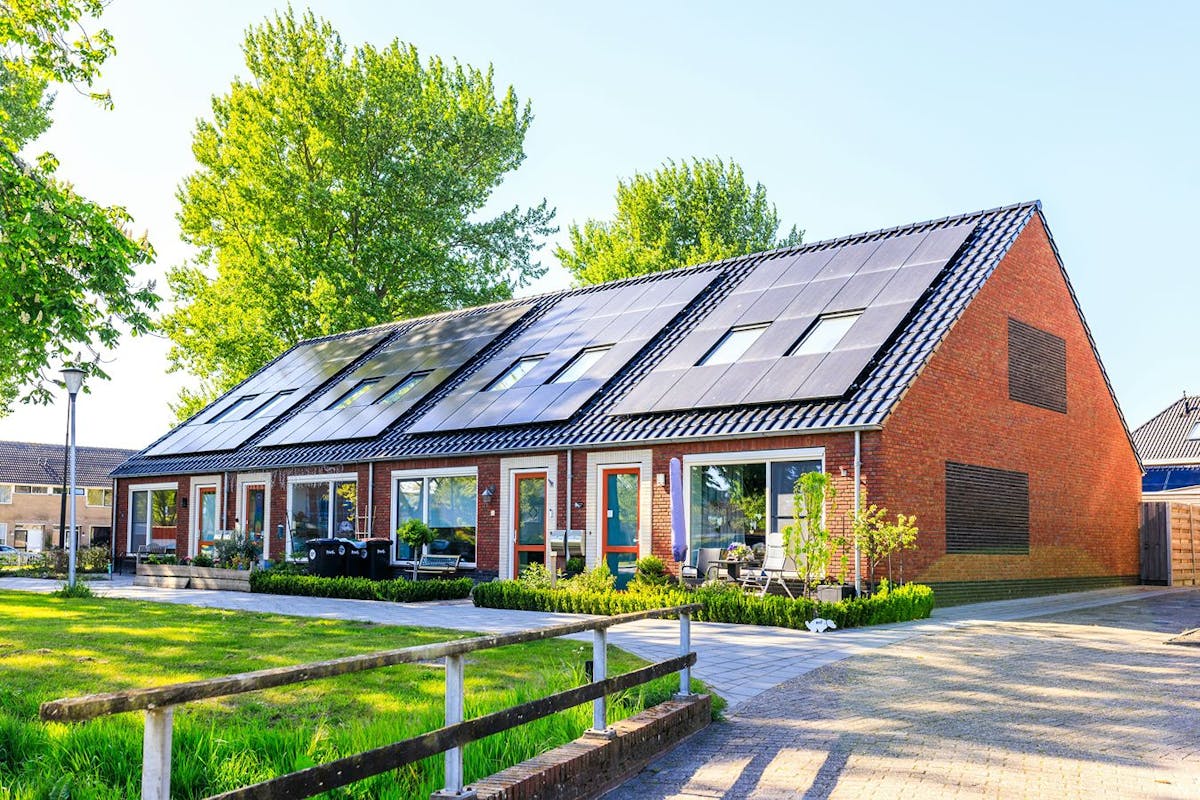Solar Panel Recycling Makes Clean Energy Cleaner
Last edited

Author
Andrew Blok
Electrification and Solar Writer and Editor

Editor
Andrew Giermak
Solar and Electrification Writer and Editor

There are millions of solar panels in use in the US and around the world. Millions more are installed each year. Solar power is the fastest growing energy technology, making up 66% of all the new electric capacity added in the US in 2024.
The 25 years or longer home solar panels work efficiently seems like a long time. Someday though, this increasing number of solar panels — residential, commercial, utility-scale, and industrial — will be taken down and out of service. What will happen then? What happens to solar panels when they need to be disposed of now?
Solar panel recycling is a key source of materials for new solar panels and it makes this clean energy technology even cleaner. Here’s where solar recycling stands today, and what it could look like in the future.
See how much you can save by going solar with Palmetto
Are solar panels recyclable?
Yes, solar panels are recyclable. About 85% of a solar panel is made up of commonly recycled materials, like glass, aluminum, copper, and plastic.
But, like other recycling industries, actually extracting and repurposing those materials is not always cost effective compared to landfilling them. Removing the glass from a solar panel isn’t the same as rinsing a wine bottle and placing it in your curbside bin. It’s a bit more complicated.
How are solar panels recycled?
According to the US Department of Energy, about 95% of panels sold today are crystalline silicon, which is the semiconductor material used in solar cells. Made to withstand decades of exposure to the elements, the interconnected PV cells of solar panels are encased in plastic and sandwiched between glass and a back sheet. A metal frame typically made of aluminum holds the whole setup together. On the back of the panel, there's a junction box containing external copper wiring.
Here’s how a company might go about recycling solar modules.
- Initial dismantling: The junction box and frame are separately removed from the PV modules to recover copper and aluminum. Both of these materials are 100% reusable, so nothing goes to waste here.
- Glass recovering: The rest of the module goes along a conveyor belt to recover the glass sheets. The glass recovered here is at least 95% reusable.
- Heat separation: The remaining materials are treated at 500 °C in a thermal processing unit. This loosens the bonds between the cell elements. The plastic eventually falls off, leaving the silicon cells to be processed further. To make sure nothing goes to waste, the plastic is incorporated back into the recycling process for heating purposes.
- Cell separation: In this step, the interconnected PV cells are mechanically separated. 80% of them are reusable while the rest have to undergo further refinement before they can be reused.
- Silicon capture: The remaining product undergoes further refinement to capture more silicon. Sizeable pieces of silicon recovered here are melted to be used again for manufacturing new PV panels. As for the silicon that is in crushed or particle form, it's etched away using acid. The overall recycling rate of the silicon material is about 85%.
Thin-film panel recycling is different. First, the panels go into a shredder, followed by a hammermill, until all particles are no bigger than 4-5mm in size. The remaining substance is a mix of solid and liquid, so a rotating screw helps separate the two materials.
Liquids from the thin-film panels pass through a precipitation and dewatering process to guarantee purity. Then a metal processing step separates the semiconductor materials, with an average of 95% of the semiconductor material being available for reuse.
Solids from the thin-film panels pass over a vibrating surface that helps remove the interlayer materials. Then it goes through a rinsing step, leaving behind pure glass, with an average of 90% being available for re-manufacturing.
See how much you can save by going solar with Palmetto
The current state of solar panel recycling in the US
Solar panel recycling is still a growing industry, which makes sense. The solar industry regards solar panels’ useful life at about 25 years. Since nearly 70% of all installed solar panels were put into service in 2017 or later, it will still be another two decades before truly huge amounts of solar panels are decommissioned.
But since solar panels have already been in use for decades, the recycling industry is already up on its feet.
SolarCycle, one of the leading recyclers in the US, says it recycled 500,000 panels in 2024, recovering 3.5 million pounds of aluminum and more than 365,000 pounds of other valuable materials including silver, copper, and silicon.
Other recycling efforts have been announced since the Inflation Reduction Act provided incentives to recycle solar panels, according to the economic and environmental advocacy group E2.
Challenges still remain. According to a 2022 report from the Department of Energy’s Solar Energy Technologies Office, recycling a panel costs about $15-$45 dollars, while landfilling it costs $1-$5. Reducing the cost of recycling and boosting the value of recovered materials will help the industry grow.
The future of solar panel recycling
Solar panels could turn into a huge amount of waste if they’re not recycled.
According to the US International Trade Commission, approximately 8 million metric tons of solar panels will reach the end of their useful life by 2030 globally, and that number could reach 80 million metric tons by 2050. Decommissioning the current generation of solar panels could add up to 1 million tons of waste in the US by 2030 if the panels aren’t recycled. While that represents just a fraction of all solid waste, it still represents a big challenge and a huge opportunity.
One frequently cited report from the International Renewable Energy Agency, says the raw materials from recycled solar panels could be worth $450 million by 2030 and $15 billion by 2050. As recyclers find out how to extract that value from old solar panels, solar energy can become even more sustainable.

Credit: Solar Energy Industries Association
Reducing solar panel waste
Productively reducing solar panel waste will make them even more climate- and environmentally-friendly than they already are. Besides recycling, there are other pathways to reducing the impact of solar panels at the end of their lifetime.
Increasing the lifespan of panels
The first 25 to 30 years after your solar system is installed are referred to as the PV system's "useful life." That’s typically the age solar panels reach about 80% of their original efficiency. Extending the lifespan of solar panels by even 2-3 years could decrease waste by 2-3 million metric tons by 2050, the Solar Energy Technologies Office says.
Reusing old solar panels
Because panels can continue producing energy after 25 years, they can be repurposed in places or for jobs where the highest possible output isn’t necessary. Retired solar panels can have a productive second act.
Making solar panels easier to recycle
By building greater recyclability into solar panels from the start, recycling efforts can recover more useful material for lower cost.
Increasing solar panel efficiency
As solar panel efficiency increases, fewer panels will be needed to generate the same amount of electricity. That means more power for less waste.
Increasing energy efficiency
In residential solar, improving the energy efficiency of the home can reduce the overall need for electricity, reducing the number of panels needed.
Advancing solar panel recycling tech
The solar panel recycling technology of 10 years ago is not the same as it is today, as innovators in the industry continue to decrease the cost to recycle solar panels.
For example, research has begun at the National Research Energy Laboratory into a high-value, integrated recycling system. At its core, the technology aims to recover all materials and components at high purity. Researchers, solar panel advocates, and clean energy enthusiasts all vouch for this idea. Although still in the development stages, this technology could revolutionize the industry and make solar panel recycling problems a thing of the past.
Where and how to recycle solar panels
Solar panel recycling technology might be in its early days, but that doesn't mean the average solar panel owner can't join in on this important initiative.
If you’re looking to recycle your home solar panels, start by checking to see if your state has a directory for solar recycling, like this one from North Carolina. You can also examine this global directory of solar panel recycling firms for options in your area.
Some PV panel manufacturers offer their own take-back and recycling programs for scrap, warranty returns, and end-of-life. You can reach out to your manufacturer directly to find out if they offer services to recycle solar panels.
The benefits of solar panels
Solar panel recycling still has room to grow, and it will need to, given the huge amounts of solar panels being deployed today. Luckily, those solar panels deployed today have 25-30 years of useful life before they’ll need to be replaced.
The recyclability of solar panels could become another one of their benefits, which already include energy bill savings for homeowners and clean, renewable energy that meets society’s needs without warming the planet.
Discovering how you can save money and conserve energy right at home is easy with the new Palmetto app. The app makes saving more like a game and specific to your property once you join. To see how solar panels could benefit you, explore Palmetto’s solar savings tool today.
See what solar can do for you:
Frequently asked questions
What happens to old solar panels?
Today, solar panels may be landfilled, though solar panel recycling is ramping up around the country. Solar panels can also be reused in new contexts where maximum electricity output isn’t necessary.
How are solar panels recycled?
Solar panels are broken down using mechanical and chemical methods to recover valuable materials, such as glass, aluminum, silicon, and more.


